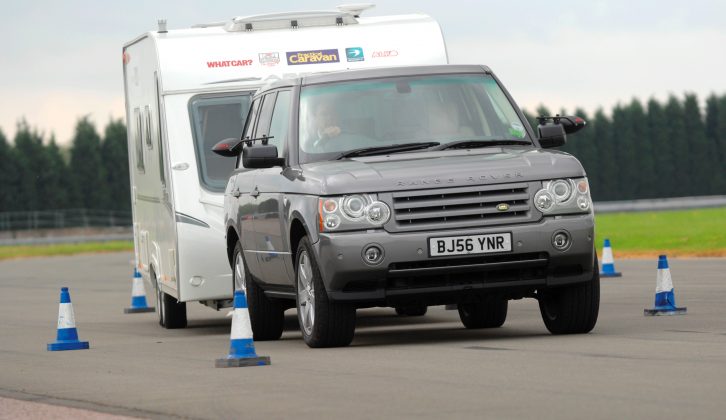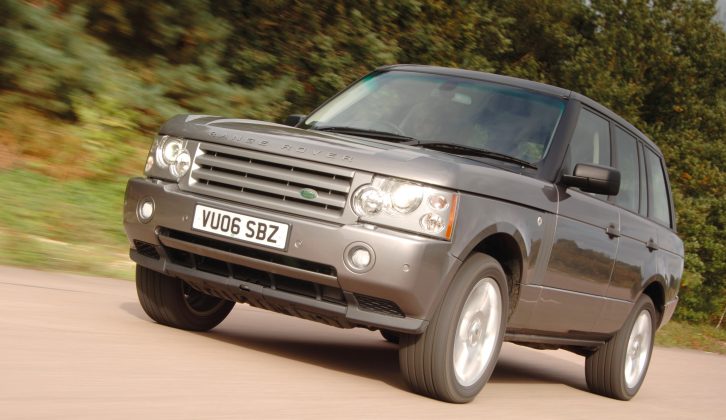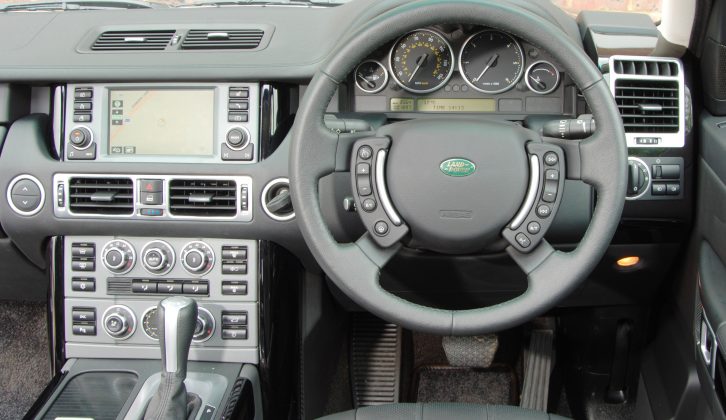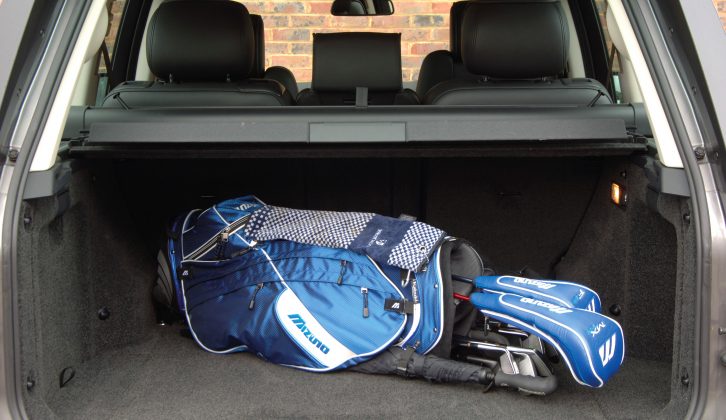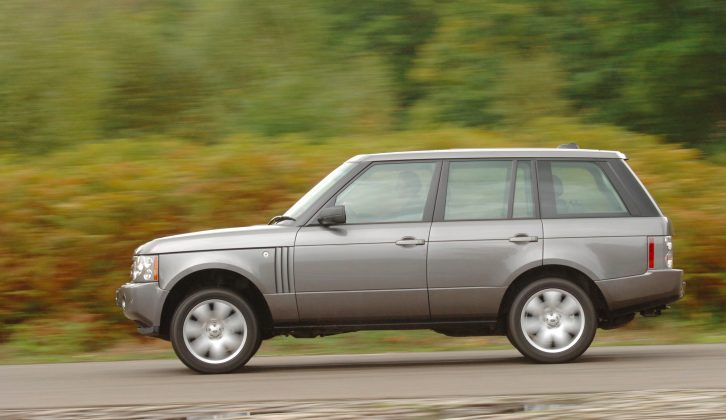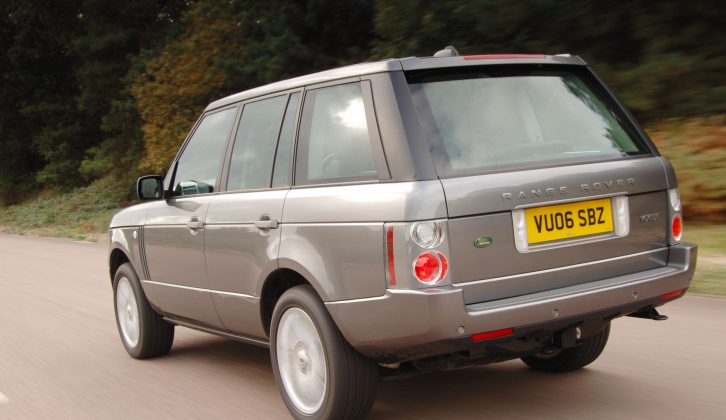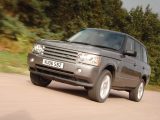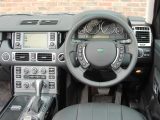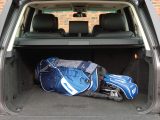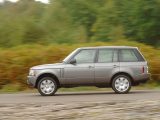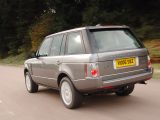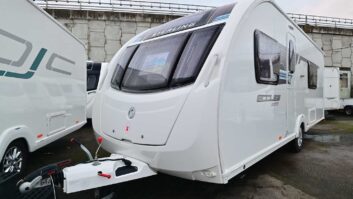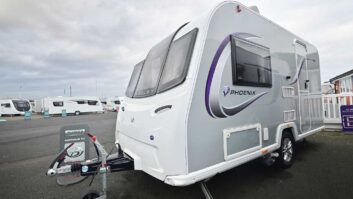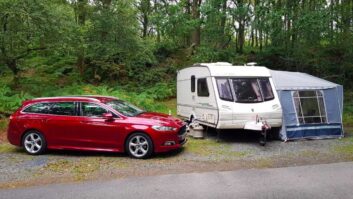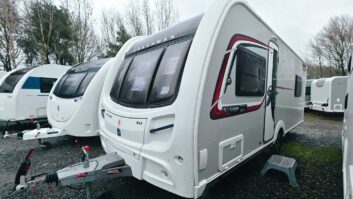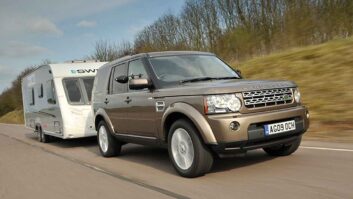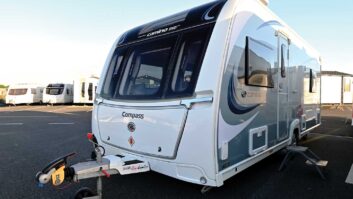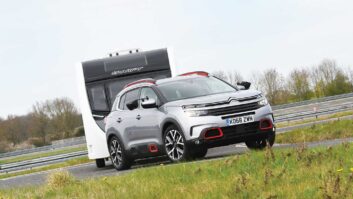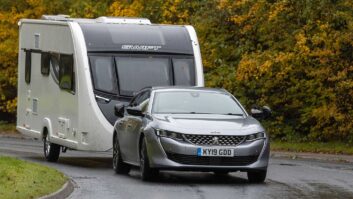The Range Rover always had an image that signified its status as a cut above the rest, but the BMW-developed third-generation model took this a step further.
It was less a well-appointed 4×4 and more of a luxury car that could go pretty much anywhere.
Here we are looking at the 2002-2012 cars. There were two engines available at first, both sourced from BMW. The petrol option was a 4.4-litre V8, and the diesel was the 3.0-litre straight-six. Both drove all four wheels through an automatic gearbox.
The diesel far outsold the petrol in the UK because of its strong torque, reasonable emissions, and the fact that it didn’t require the driver to stop at every third fuel station.
Model updates
Land Rover was sold to Ford, and the Range Rover was honed and tweaked for the next few years.
Then, in 2007, the new 3.6-litre TDV8 diesel engine was launched, and instantly made the Range Rover even more desirable.
It has nigh-on 100bhp more than the engine it replaced. Torque gains were even larger, with the old car’s 287lb ft rising to 472lb ft, which is a big part of what makes this Range Rover a cracking choice for caravanners – there is no doubting what tow car ability it has.
It is strong enough that the only way you’ll know you’re towing a caravan is if you look in the mirror.
It is utterly effortless, no matter whether you’re pulling away on a steep slope or accelerating up to speed on a motorway.
The electronic handbrake makes hill starts simple, and the six-speed automatic gearbox shifts up and down smoothly. The speed-sensitive steering is also accurate.
Well kitted out
Inside, all Range Rovers are brim-full with leather, wood and technology.
All are well specified, and higher-end models have heated and cooled seats, sat-nav, digital TV and even a heated steering wheel.
All have a rear-view camera that takes any guesswork out of reversing up to your caravan’s tow hitch.
Space is also generous for all occupants and their luggage, and the split tailgate can also double up as a handy bench.
Trouble spots
It’s fair to say that the words ‘Range Rover’ and ‘reliability’ have rarely been seen in the same sentence, so it will pay to take care when choosing a used example.
For a start, it is imperative that you make sure the Range Rover you’re looking at has as comprehensive a history file as possible.
This should include not only regular servicing work, but also unscheduled repairs, and detail all the recalls the car has been subjected to, and where the work was carried out.
Range Rovers tend to be most often afflicted with electrical issues and, unfortunately, these can affect a multitude of systems.
Electronic problems and sensor failures can cause the engine to go suddenly into limp-home mode, can make the gearbox stick in one ratio, and can affect the suspension and instruments.
The air suspension has also been known to develop leaks, so make sure it raises and lowers the car as it should, and that it stays at your set height. If it doesn’t, the air is likely making a bid for freedom somewhere.
The car’s front differential is also a weak point, because the propshaft coupling can wear, which leaves the car with no drive to the front wheels.
Transmission maladies around the 100,000-mile mark have been reported, and the DPF filter in the exhaust can clog if the car is driven for only short distances.
Apart from that, the Range Rover is known for its off-road prowess, so it’s worth getting an independent mechanical inspection to ensure it hasn’t been damaged underneath.
Still, the good news is that regular servicing isn’t too expensive. It’s the irregular stuff that costs more.
Verdict
The Range Rover is an undeniably luxurious mode of transport that will make towing your caravan to any campsite as easy as it can possibly be.
You can also bask in all the envious glances when you reach your destination.
However, make sure you do the hard work before you buy your used Range Rover, because a history check and mechanical inspection are essential if you want to keep on reaching your destination.
Bear in mind, too, that such a luxury vehicle generates high-end bills when it goes wrong.
Still, buy carefully and the Range Rover will serve as a tow car like no other.
Our top choice tug would be the 3.6 TDV8 Vogue version. The engine is extremely strong and quiet, even when working hard. In addition, Vogue trim is full of goodies tow car users will need, and quite a few they won’t.
However, we would try to avoid the 4.4 V8 HSE. The early MkIII Range Rover might have had a V8 petrol engine, but with 282bhp it still has to work hard to shift the Range Rover’s heft. Sounds good, though.
What you need to know
Now we know what tow car ability the 2002-2012 Range Rover has and what to look for when buying, but how much will you have to pay? We think anywhere between £8500 and £29,000.
If you spend as little as £8500 for our preferred TDV8 Range Rover, it’ll have had a busy life, and could prove to be more bother than it’s worth.
Increase your budget to the £14,000 mark and you’ll still have hefty mileage figures, but the cars are more likely to have been looked after.
A not-insubstantial £22,500 will net you a car that has a thick service history file as well as a lower mileage figure.
However, for £29k you’ll get a low-mileage car in mint condition.
Here are some useful figures (for a 2007 Range Rover 3.6 TDV8 Vogue):
- Kerbweight 2717kg
- 85% match 2309kg
- Towing limit 3500kg
- Towball limit 150kg
How much is a towball? According to quotes from PF Jones, a Witter flange towbar will cost £140.64 and a Witter detachable towbar will be £379 (fitting extra).
And what about servicing? An interim service is £162.60 and a full service is £238.10, according to quotes supplied by Servicing Stop.
It’s fair to say that the words ‘Range Rover’ and ‘reliability’ have rarely been seen in the same sentence
